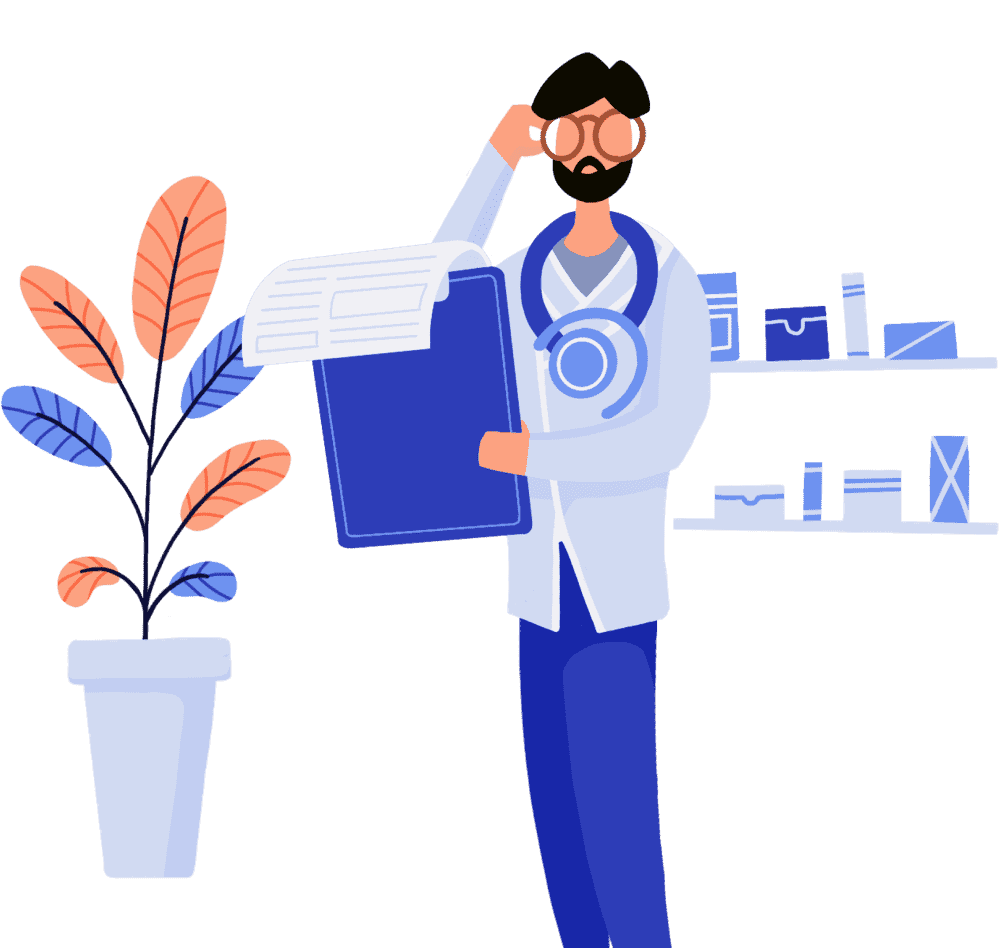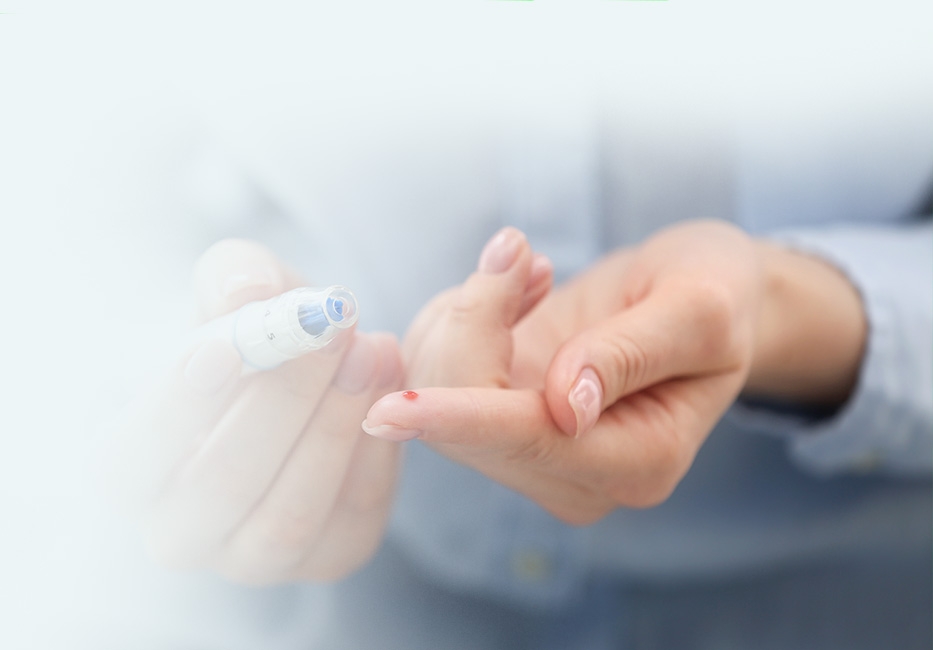Please note: Due to high order volumes, deliveries may take a little longer than usual. Thank you for your patience.
- Home
- Chronic Conditions
- Diabetes Medication
Diabetes Medication
Gain Control Of Your Blood Sugar With The Right Treatment
Over 5.8 million people in the UK are living with diabetes, with 4.6 million diagnosed and an estimated 1.3 million undiagnosed [1]. Type 2 diabetes is the most common form, and many people may have it without realising. Worldwide, the number of people living with diabetes has risen sharply, from 200 million in 1990 to 830 million in 2022 [2]. With this growing impact, understanding the condition is more important than ever. Type 2 diabetes can often be prevented or delayed through healthy lifestyle choices, including a balanced diet, regular physical activity, weight management, appropriate medication and routine health checks. Knowing the risks, symptoms and treatment options can help you take control of your health and reduce the risk of serious complications.
Think you might have Diabetes? Try our 'Do I Have Diabetes' quiz.
More Information
Start Your Online Consultation for Diabetes
It only takes a few minutes to complete your online consultation for diabetes with a registered prescriber at UK Meds. Simply follow the steps below to get started.
- Choose your preferred diabetes treatment from our available options.
- Complete our quick online questionnaire. A registered prescriber will review your answers and, if appropriate, issue a prescription.
- Your prescribed medication will then be dispensed and delivered securely in discreet packaging. Depending on your delivery choice, it could arrive as soon as tomorrow.
All requests for prescription medication at UK Meds are subject to an online clinical consultation. The final decision to prescribe will always be made by a registered prescriber.
What is diabetes?
Diabetes is a long-term condition that causes your blood sugar (glucose) levels to stay higher than normal. There are two main types: type 1 and type 2 diabetes. Both can cause similar symptoms, such as feeling very thirsty, needing to pass urine more often, feeling tired, losing weight without trying, slow-healing wounds, and frequent infections.
Type 1 diabetes develops quickly, often within days or weeks, and usually appears in childhood or early adulthood. It happens when the immune system attacks and destroys the cells in the pancreas that make insulin. Type 1 diabetes cannot be prevented.
Type 2 diabetes develops more slowly, sometimes over many years, and may go unnoticed for a long time. It occurs when the body doesn’t use insulin properly or doesn’t produce enough. It is more common in adults and often linked to being overweight, inactive, or having a family history of diabetes.
Insulin is a hormone that helps move glucose from the blood into your cells to be used for energy [4]. When this process doesn’t work properly, glucose builds up in the blood, leading to high blood sugar levels [3].
Differences between Type 1 and Type 2 diabetes
Although both affect blood sugar control, type 1 and type 2 diabetes develop for different reasons. The table below outlines the main differences between the two.
| Feature | Type 1 Diabetes | Type 2 Diabetes |
|---|---|---|
| Cause | The immune system attacks the insulin-producing cells in the pancreas [5]. | The body cannot use insulin properly or does not make enough [6]. |
| Development | Appears suddenly, often within days or weeks. | Develops slowly over many years. |
| Insulin production | No insulin is produced. | Some insulin is produced, but not enough or not used effectively. |
| Prevention | Cannot be prevented. | Can sometimes be prevented or delayed through healthy lifestyle changes. |
| Typical age of onset | Usually develops in childhood or early adulthood. | More common in adults over 40, but increasingly seen in younger people. |
| Prevalence in the UK | Less common – around 8% of diabetes cases. | Far more common – over 90% of diabetes cases. |
Both type 1 and type 2 diabetes are lifelong conditions. However, prediabetes and gestational diabetes (which can develop during pregnancy) may sometimes be reversed with early treatment and lifestyle changes.
Spotting diabetes early is important to prevent complications such as diabetic retinopathy, which can cause vision loss.
Symptoms of Type 1 and Type 2 diabetes
Although many symptoms overlap, they may appear differently depending on the type of diabetes. The table below shows which symptoms are most common for each type.
| Symptom | Type 1 Diabetes [7] | Type 2 Diabetes [8] |
|---|---|---|
| Urinating more often than usual | ✔ | ✔ |
| Feeling very thirsty | ✔ | ✔ |
| Extreme tiredness or lack of energy | ✔ | ✔ |
| Unexplained weight loss | ✔ | ✔ |
| Blurred vision | ✔ | ✔ |
| Slow-healing cuts or wounds | ✔ | ✔ |
| Sweet or fruity-smelling breath | ✔ | ✖ |
| Repeated thrush or skin infections | ✔ | ✔ |
If you notice any of these symptoms, speak to your GP or a healthcare professional as soon as possible. Early diagnosis and management can help reduce the risk of complications and support long-term health.
What causes diabetes?
In a healthy body, glucose from food is absorbed into the bloodstream and moved into cells with the help of insulin. If you have diabetes, your body either does not produce insulin or cannot use it properly, so glucose stays in the blood. High blood sugar over time can cause serious health complications, which is why treatment and monitoring are essential.
Type 1 diabetes is not preventable and is usually linked to genetics. It happens when the immune system attacks the cells that make insulin. The exact cause is unknown, but your risk is higher if you have a family history or another autoimmune condition. It is more common in children and in people living further from the equator.
Type 2 diabetes is often linked to lifestyle factors. Being overweight, having high cholesterol or high blood pressure, eating an unhealthy diet, or not exercising enough can make your body resistant to insulin. Smoking, heavy drinking, and certain long-term medications can also increase your risk. It is more common in people over 40, those of South Asian, Black African, or African Caribbean heritage, and in women who have had gestational diabetes.
| Risk Factor | Details |
|---|---|
| Being overweight or having a high BMI | Excess body fat can make the body resistant to insulin. |
| Low physical activity levels | Not enough exercise reduces insulin sensitivity. |
| Poor diet lacking in balance and nutrients | High sugar and processed foods increase risk. |
| Family history of type 2 diabetes | Risk is higher if close relatives have the condition. |
| Waist-to-height ratio of 0.5 or more | Indicates central obesity, linked to higher diabetes risk. |
| Asian, Black African, or African Caribbean background | Higher genetic and lifestyle-related risk in these groups. |
| High blood pressure | Often linked with insulin resistance and metabolic syndrome. |
| History of gestational diabetes | Increases the likelihood of developing type 2 diabetes later in life. |
| Long-term use of certain medicines | Corticosteroids and HIV treatments can affect blood sugar levels. |
| Damage to the pancreas | Reduces or stops insulin production. |
| Age over 40 | Risk increases with age, particularly after 40. |
Type 2 diabetes is much more common, making up around 90% of diabetes cases in the UK.
How is Diabetes Diagnosed?
Type 1 and type 2 diabetes are usually confirmed with a blood test. Your GP may use one or more of the following:
- Fasting blood sugar test - Taken after at least 8 hours without food. A result of 7mmol/L or above on two occasions indicates diabetes. Levels between 5.6-6.9mmol/L suggest prediabetes. Below 5.6mmol/L is normal.
- HbA1c test - Measures your average blood sugar over the past 2-3 months. An HbA1c of 48mmol/mol (6.5%) or above on two tests confirms diabetes. Levels between 39-47mmol/mol (5.7-6.4%) indicate prediabetes. Below 39mmol/mol (5.7%) is normal.
- Random blood glucose test - A sample taken at any time, from a vein or finger prick. A reading of 11.1mmol/L or above suggests diabetes.
- Glucose tolerance test - Commonly used for gestational diabetes. Blood sugar is measured after fasting, then again two hours after drinking a sugary drink. Gestational diabetes is diagnosed if fasting glucose is 5.6mmol/L or more and the two-hour result is 7.8mmol/L or more.
If type 1 diabetes is suspected, your GP may also check your urine for glucose or ketones.
How can diabetes be treated?
The treatment for diabetes depends on whether you have type 1 or type 2. Both require careful management to control blood sugar levels and reduce the risk of complications.
Type 1 diabetes
Type 1 diabetes is managed with insulin to regulate blood glucose. Your healthcare team will teach you how to calculate your dose and recognise signs of low blood sugar (hypoglycaemia). You will also learn how to treat a hypo quickly and safely.
Insulin can be given through daily injections with a pen or syringe, or via an insulin pump. Pumps deliver a steady flow of insulin and some work with continuous glucose monitors to adjust doses automatically. This is called a hybrid closed loop system.
Alongside insulin, you will need to check your blood glucose levels regularly and count the carbohydrates in your meals and drinks to match your insulin dose accurately.
Regularly monitoring your blood glucose
The NHS advises checking blood glucose at least four times a day (five for children), including before meals and bedtime. You may need to test more often when unwell, exercising, or drinking alcohol.
- Blood glucose monitor
- Diabetes lancets
- Test strips
Many people are eligible for continuous glucose monitors on the NHS, which reduce the need for finger-prick testing.
Carbohydrate counting
Carbohydrates are broken down into glucose, which affects blood sugar. Learning how to count carbs helps you adjust insulin doses to keep levels stable.
Type 2 diabetes
Type 2 diabetes is often managed first with lifestyle changes to lower blood sugar and improve overall health. Medication may be needed if these changes are not enough.
Lifestyle changes
- Eat a balanced, healthy diet
- Limit processed foods high in salt and sugar
- Exercise regularly
- Maintain a healthy weight
- Stop smoking
- Reduce alcohol intake
These steps can sometimes return blood glucose to a normal range and help prevent progression from prediabetes to type 2 diabetes.
Medicines
Metformin is usually the first medicine prescribed for type 2 diabetes. It helps lower blood glucose by improving the body’s response to insulin. If metformin is not enough, insulin or other medicines such as Ozempic may be recommended. Metformin and insulin can also be used to manage gestational diabetes when lifestyle measures alone are not effective.
Frequently Asked Questions
Below we answer your most commonly asked questions about diabetes:
Can Weight Loss Medication Treat Diabetes?
Glucagon-like peptide-1 receptor agonists (GLP-1s or GLP-1RAs) are medicines that copy the action of a natural hormone released after eating, helping you feel fuller for longer and control blood sugar. Some, like tirzepatide (Mounjaro), also target another hormone that regulates appetite and glucose. Although often called “weight loss injections” in the media, not all are licensed for weight loss.
In the UK, GLP-1 medicines licensed by the Medicines and Healthcare products Regulatory Agency (MHRA) include semaglutide (Wegovy, Ozempic, Rybelsus), tirzepatide (Mounjaro), liraglutide, exenatide (Bydureon) and dulaglutide (Trulicity). Being “licensed” means they’ve been assessed for specific approved uses. The MHRA has not evaluated their safety or effectiveness for unapproved uses such as cosmetic weight loss.
GLP-1 Medicines and Their Uses
GLP-1 agonists can be prescribed for type 2 diabetes and, in some cases, weight management:
- Mounjaro (tirzepatide) - Weekly injection for type 2 diabetes and approved for weight loss on the NHS.
- Wegovy (semaglutide) - Weekly injection for weight loss in people with obesity or overweight with health problems; also licensed to reduce heart attack and stroke risk in these groups.
- Ozempic (semaglutide) - Weekly injection for type 2 diabetes only.
- Rybelsus (semaglutide) - Daily tablet for type 2 diabetes.
- Saxenda (liraglutide) - Daily injection for weight management in eligible patients.
- Bydureon (exenatide) and Trulicity (dulaglutide) - Weekly injections for type 2 diabetes.
Although many GLP-1s are injectable, they are not the same as insulin.
| Licensed for Type 2 Diabetes (with diet & exercise) | Licensed for Weight Loss/Management (with diet & exercise in obesity or overweight with health risks) | |
|---|---|---|
| Semaglutide (Wegovy) | No | Yes* |
| Semaglutide (Ozempic & Rybelsus) | Yes | No |
| Tirzepatide† (Mounjaro) | Yes | Yes |
| Liraglutide (various brands) | Brand specific - see leaflet | Brand specific - see leaflet |
*Wegovy can also be used to reduce heart attack and stroke risk in certain patients.
†Mounjaro is a dual GLP-1 and GIP receptor agonist.
Prescription Requirements and Safety
All GLP-1 medicines are prescription-only and must be prescribed by a healthcare professional after a consultation. NHS access depends on your location and eligibility, while private access follows the same medical checks and requires a valid prescription.
Never buy these medicines from unregulated sources such as social media, beauty salons, or unauthorised websites, as counterfeit and unsafe versions exist. Legitimate GLP-1 medicines come as pre-filled injection pens. Powder products for mixing or counterfeit pens can be dangerous. Only get them from registered pharmacies, check the General Pharmaceutical Council (GPhC) in Great Britain or the Pharmaceutical Society of Northern Ireland (PSNI) for verification.
Why does diabetes affect feet?
Diabetes can lead to poor circulation and nerve damage (diabetic neuropathy), particularly in the feet and legs. Reduced blood flow can cause pain and slow healing of cuts or sores. Nerve damage may cause numbness, meaning injuries can go unnoticed and become infected. Check your feet regularly and treat any problems promptly.
Can I use Footner socks if I have diabetes?
No. People with diabetes should avoid Footner products and speak to their doctor before using any new footcare treatment.
What is a diabetes sweetener?
Artificial sweeteners such as Canderel, Splenda and Sweetex are safe for people with diabetes when used in moderation. Natural options like Stevia are also available and contain no calories.
What is a ketone strip?
Ketone strips help detect ketones in blood or urine, which can signal insufficient insulin and risk of ketoacidosis. Testing can be done with a finger-prick blood sample or by passing urine over a strip.
What is continuous glucose monitoring?
Continuous glucose monitoring (CGM) tracks blood sugar throughout the day and night using a small sensor worn under the skin for up to 14 days. Devices like the FreeStyle Libre 2 send readings to your smartphone and can alert you to changes or signal loss. CGM is suitable for type 1 and type 2 diabetes.
How can I monitor my blood sugar without finger pricks?
A flash glucose monitor can measure glucose in the fluid around your cells (interstitial fluid) instead of blood from a finger prick. Readings may be slightly delayed after eating or exercise, but this can be a good option if you dislike regular finger pricks.
What is the best blood sugar monitor?
The best option depends on your lifestyle and preference. Invasive monitors require blood samples several times a day. Minimally invasive devices scan the skin for instant readings but may have sensor issues. CGMs offer ongoing readings with minimal effort.
What is the best time to check blood sugar?
Test before meals, after exercise, and before bed. Fasting readings (before eating) are most accurate. If testing after eating, wait two hours for a reliable result.
Learn more with UK Meds support resources for DIabetes:
- What’s the Difference Between Type 1 and Type 2 Diabetes? - This article explains the key differences between Type 1 and Type 2 diabetes, helping you understand how each affects your body.
- Type 2 Diabetes Treatment and Testing Guide - A comprehensive guide on how Type 2 diabetes is managed, including testing and treatment options available.
- Do I Have Diabetes? Quiz - A simple quiz to help you identify if you might have diabetes and need to see a doctor.
- Guide to Ozempic for Diabetes - Learn how Ozempic helps manage Type 2 diabetes by lowering blood sugar levels.
- What Are the Different Types of Diabetes Medication? - An overview of the various medications used to manage diabetes and how they work in the body.
- New Year's Resolution: Managing Your Diabetes - Helpful tips for making and keeping resolutions to better manage your diabetes in the new year.
- Guide to Prediabetes: Causes, Symptoms, and Treatments - Find out what prediabetes is, its symptoms, and how you can prevent it from turning into Type 2 diabetes.
- Metformin for Diabetes and Weight Loss - Understand how Metformin can help manage Type 2 diabetes and also aid in weight loss.
- Doctor’s Corner: Your Questions About Metformin Answered By a Doctor - A doctor answers common questions about Metformin, its uses, and potential side effects.
- Healthier You: NHS Diabetes Prevention Programme - Learn about the NHS programme designed to help people prevent Type 2 diabetes with lifestyle changes.
- Metformin for Weight Loss - Discover how Metformin can help with weight loss, particularly in people with Type 2 diabetes.
- Can You Take Ozempic Injections with Other Medications? - Find out if it’s safe to take Ozempic alongside other common medications for diabetes or health issues.
- Nature’s Ozempic: Facts about Berberine - Learn about Berberine, a natural alternative to Ozempic that may have similar benefits for controlling blood sugar levels.
- Mounjaro vs Ozempic: Which is Better? - Compare Mounjaro and Ozempic, two popular medications for managing Type 2 diabetes, to see which might work best for you.
- Who is Mounjaro Suitable For? - Find out if Mounjaro is a suitable treatment for your Type 2 diabetes based on your health needs.
- How Long Do Mounjaro Side Effects Last? - Learn about the potential side effects of Mounjaro and how long they may last during treatment.
- MHRA Approval: Mounjaro - Find out about the approval process of Mounjaro by the MHRA and its safety for use in the UK.
- Do You Need a Prescription for Mounjaro? - Get information on whether a prescription is required to start using Mounjaro for Type 2 diabetes treatment.
- Wegovy Prescription Requirements in the UK - Learn about the prescription requirements for Wegovy in the UK and how to access this medication.
- Wegovy Interactions with Other Medications - Understand how Wegovy interacts with other medications you might be taking and any potential risks.
- Who is Wegovy Suitable For? - Discover if Wegovy is the right treatment for managing your weight and Type 2 diabetes.
- Mounjaro Prescription Requirements in the UK - Get the details on how to obtain Mounjaro in the UK, including any prescription requirements.
- Pancake Day on GLP-1 Medications and Diabetic Pancake Recipes - Celebrate Pancake Day with delicious diabetic-friendly recipes for those on GLP-1 medications.
Medication delivered the next day from UK pharmacies



Choose the right treatment
From the comfort of your own home or out on the go, choose the treatment you require from our extensive range.
Complete an online consultation
A vital part of our process, your online consultation will be similar questions to that of a GP. Quick and easy, we guarantee privacy and confidentiality.
Delivered discreetly
One of over 100 of our partner regulated UK pharmacies will dispense and ship the treatment to you in discreet packaging.
Rated out of 5 on 
Excellent service always great can never fault the company
Perfect
Service was great inhalers
Excellent service
Rated 4.6 out of 5 based on 6766 reviews
Here to help you
Our Customer Service is available Monday to Friday 9am - 5pm. If you need urgent assistance, do not use this service. Call 111, or in an emergency call 999. Visit our help section


